Top Sights of the Golden Triangle in Thailand 2026
The Golden Triangle (thai: สามเหลี่ยมทองคำ, săam lìiam tong kam), a captivating region where the borders of Thailand, Laos, and Myanmar converge, has long fascinated travelers seeking to uncover the area’s rich history, diverse cultures, and breathtaking landscapes. Located at the confluence of the Mekong and Ruak rivers, this unique destination offers an intriguing blend of ancient traditions, opulent temples, and stunning natural beauty. Uncover the area’s storied past as a major opium trade hub at the informative Hall of Opium Museum, and immerse yourself in the vibrant local cultures as you meander through bustling markets and hill tribe villages. With a multitude of activities, from cruising along the mighty Mekong River to exploring the majestic Phra That Doi Pu Khao temple, the Golden Triangle promises a truly unforgettable journey steeped in history, culture, and adventure.
The Golden Triangle is a full-day route leading to the meeting point of Thailand, Laos, and Myanmar, rich in history and riverside views. Along the way, riders pass temples, markets, and tea hills, with plenty of cultural stops. Long stretches of highway make fuel stops easy, but the distance requires pacing and breaks. For comfortable travel over varied terrain, riders often arrange a motorcycle rental through us before setting out.
Golden Triangle Viewpoint
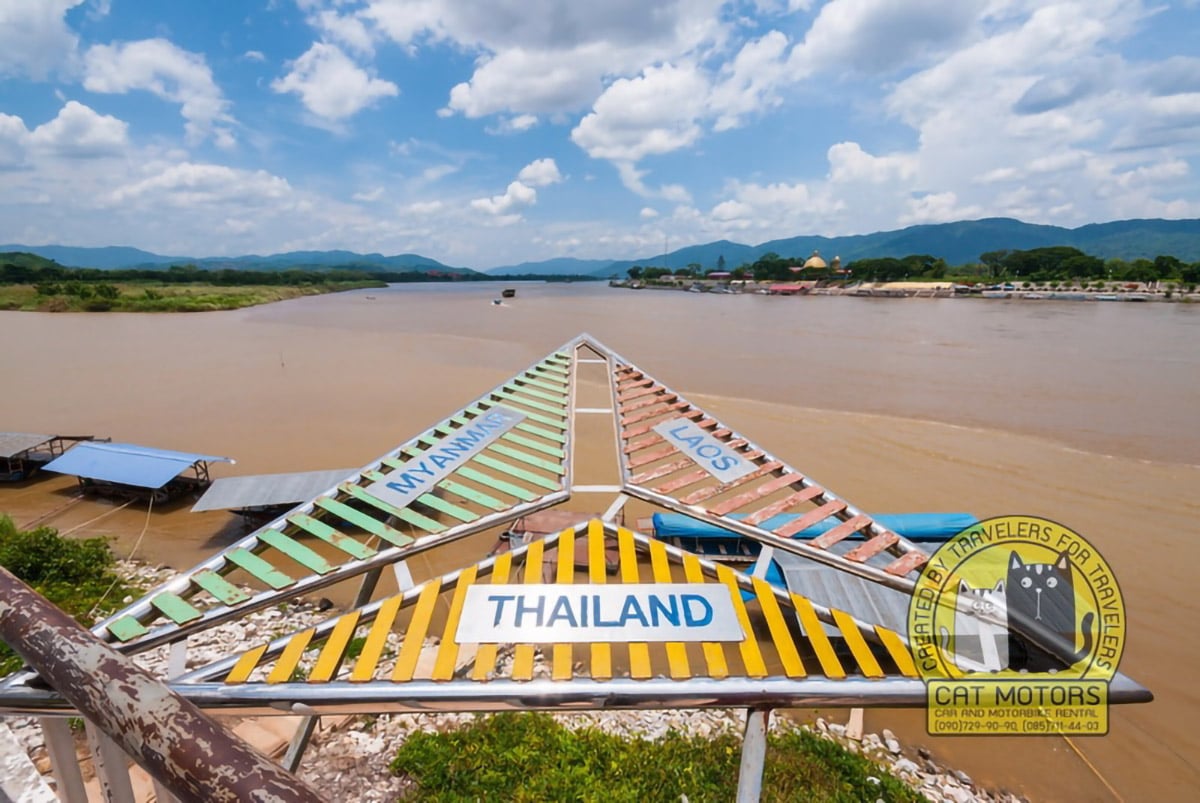
To see the confluence of the Ruak and Mekong rivers and the borders of Thailand, Myanmar and Laos, head to the observation deck of the Golden Triangle. Don’t forget to take a commemorative photo. This is your once-in-a-lifetime chance to see the meeting place of three nations and two rivers, which have left a significant mark on modern history.
This tourist route can be combined with the Chiang Rai loop, in this case, the route can take from 2 to 5 days, depending on what attractions you want to see and how fast you will ride a motorcycle. Also, about 2-3 hours away from the Golden Triangle is the famous Phu Chi Fa Mountain, which offers stunning views of neighboring Laos.
Mekong Riverfront & Sop Ruak Village
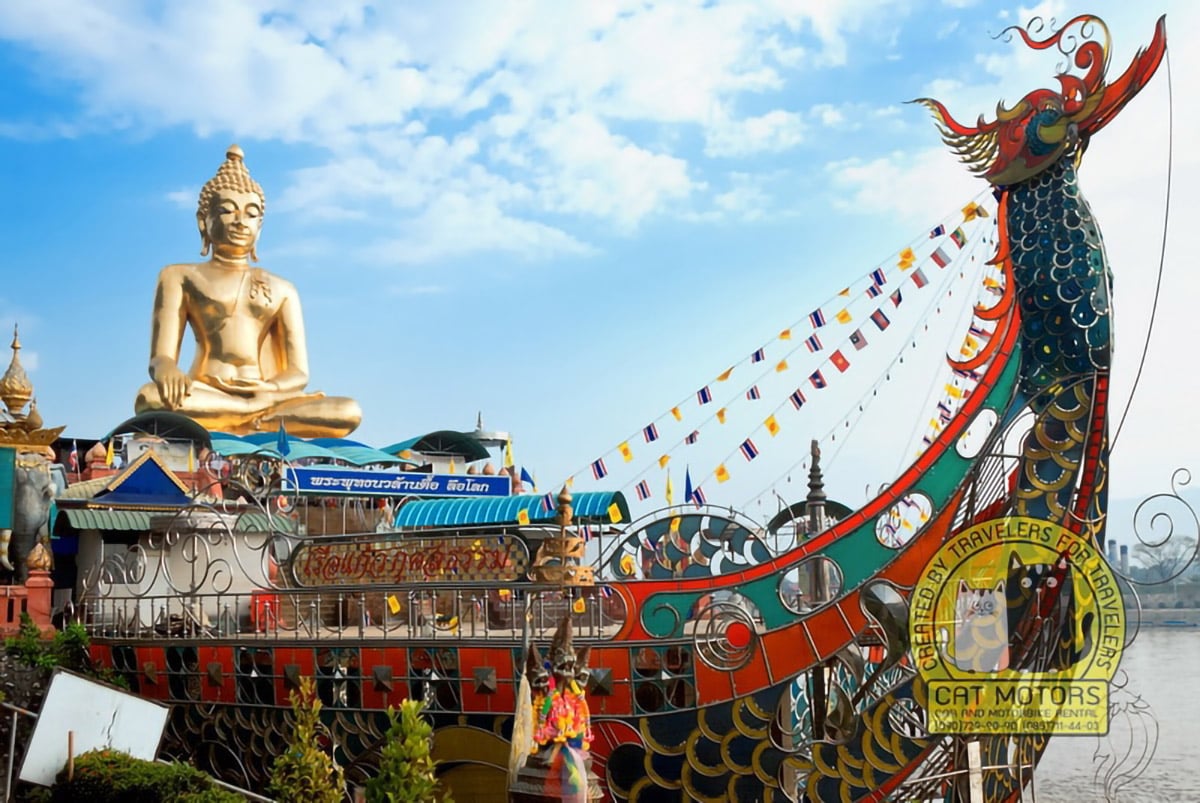
The village of Sop Ruak is located on the Thai side of the Mekong River. Here you can stroll along the waterfront admiring the wonderful views and admire the big Golden Buddha, sitting in the center of the composition, depicting a boat over the Mekong. Other attractions include; a statue of Ganesha, Happy Buddha, huge elephants, and other tourist attractions.
Wat Phra That Doi Pu Khao
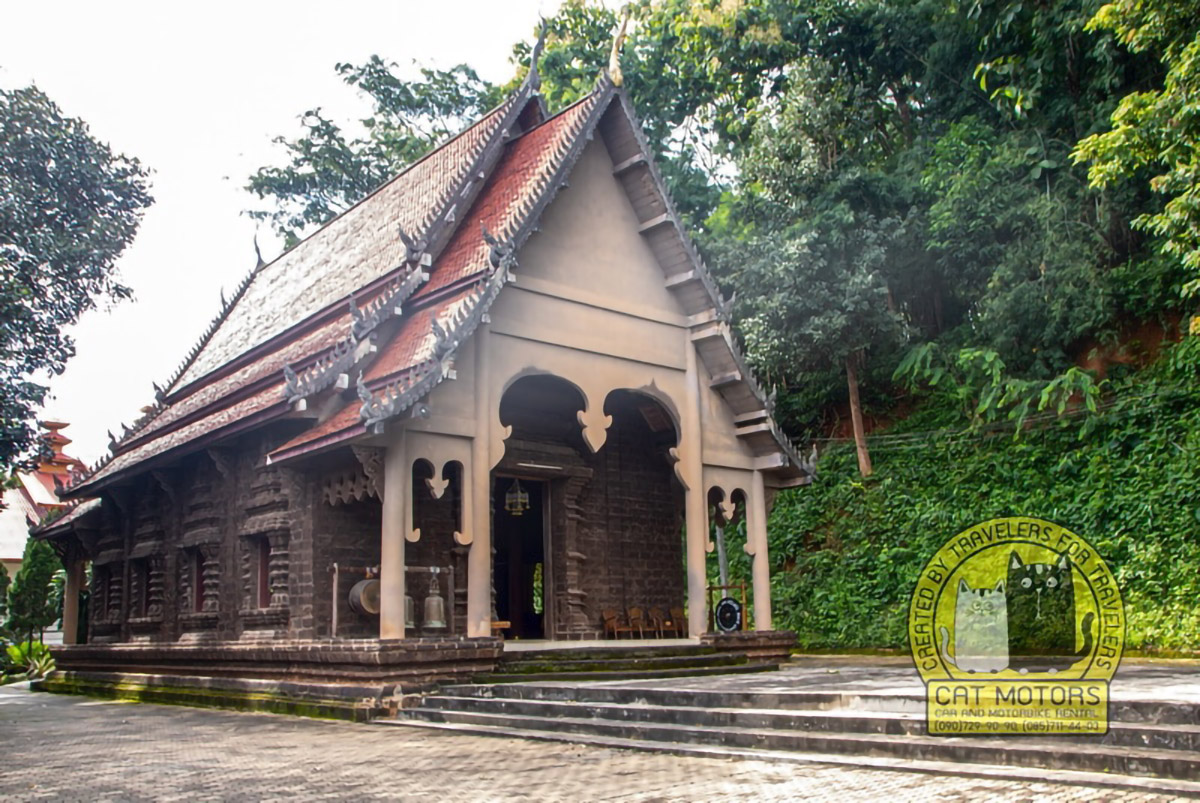
This 1200-year-old temple on the hill above the village certainly deserves a visit. The temple itself is interesting for admirers of antiquities and people not alien to the aesthetic component. But, most importantly, from its observation platform, it offers a wonderful view of the three countries – Thailand, Burma, and Laos. Here it becomes clear why the Golden Triangle is a triangle and if you would like to understand why it is golden you should visit the Opium Museum or Opium Hall.
Opium Museum and Opium Hall
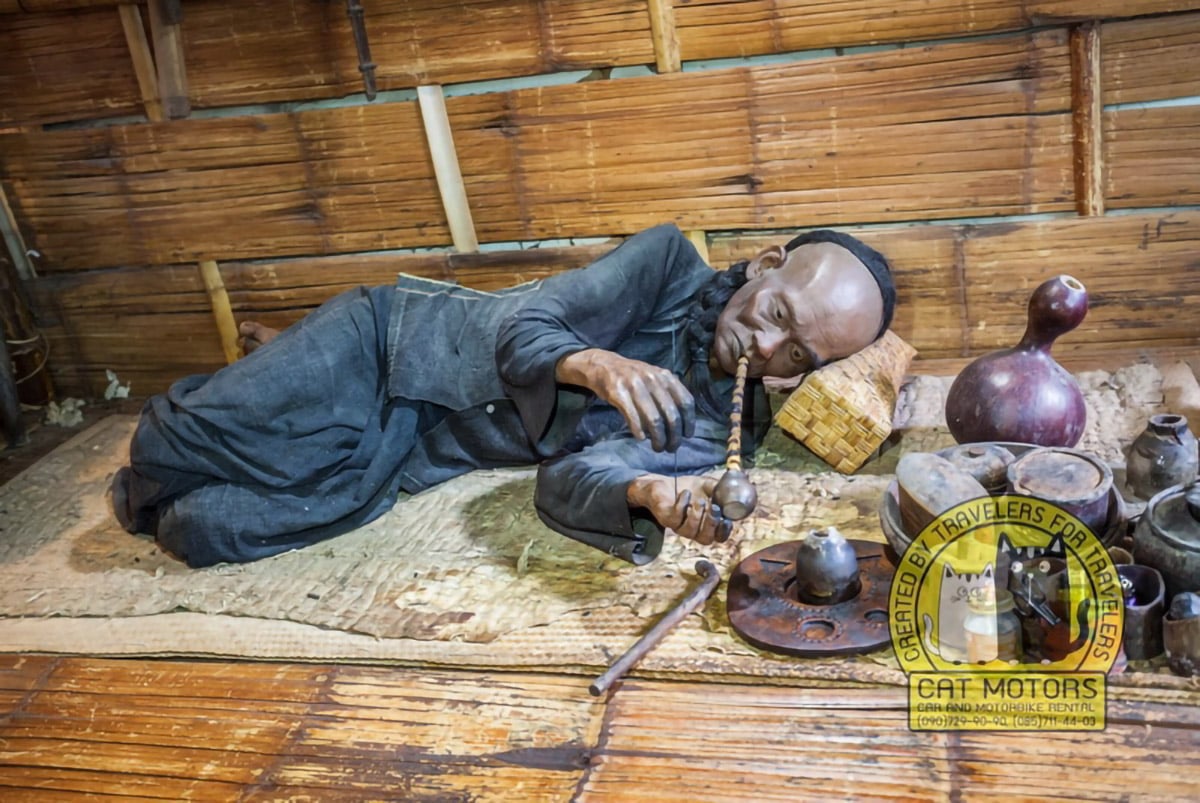
The Opium Museum is small but gives a fairly complete picture of the history of the Golden Triangle. Here you can learn everything about growing and smoking opium. There is also information about the mountain people who grew the opium poppy and the heyday of the Golden Triangle (the 70s). There are some Interesting exhibits and a good souvenir shop. Entrance ticket – 50 baht.
The Opium Hall is essentially the same as the Museum, but much larger, more detailed and more interesting. Entrance ticket is a little more expensive – 300 baht.
Don Sao Island (Laos)
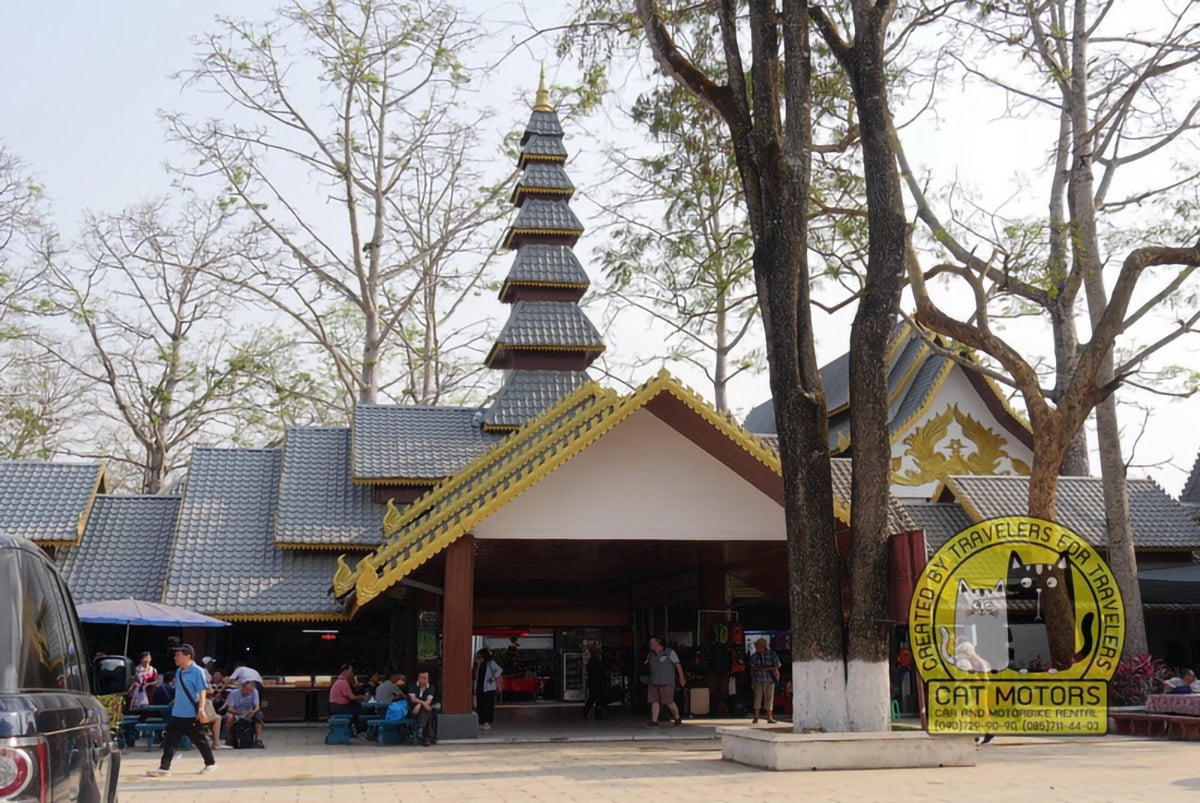
Right on the waterfront village you can negotiate a river trip and visit the island of Don Sao, owned by Laos. There are no sights on this island, only a market with cheap fakes of fashion brands – but the very fact that you visited another country is quite the excitement in itself, plus its worth the ride across the river!
Entrance ticket onto the island – 30 baht
A boat for few people – about 400-500 baht for 1.5 hours
Chiang Saen

Chiang Saen is the oldest city in Northern Thailand and for some time (not long) was its capital. Here you can admire the picturesque ruins of the fortress walls from XIII-XIV centuries, buildings and a couple of temples of the XIV century: Wat Pa Sak and Wat Jaro That Chedi Luang.
Simultaneously with the visit to the Golden Triangle, you can visit Mae Hong Son and Doi Ang Khang. If you are traveling to the Golden Triangle area for one day, then in this case you need to leave Chiang Mai at about 5 am, and in this case, at about 7-8 pm you will return back.
If you haven’t seen our travel guide with all the main attractions in Chiang Mai, you should check it out. You might find some new ideas for your trip to Northern Thailand.
Weather Forecast
Golden Triangle Quick Facts
- Location: The Golden Triangle is located in Southeast Asia, covering areas in Thailand, Laos, and Myanmar. The Thai side is primarily in the Chiang Rai Province.
- Geographical Significance: It’s named the “Golden Triangle” because it’s where the Mekong River meets the Ruak River, forming a tripoint border between Thailand, Laos, and Myanmar.
- Historical Opium Production: Historically, the Golden Triangle was one of the world’s most prolific opium-producing areas, particularly from the 1950s to the 1990s.
- Cultural Diversity: The area is known for its ethnic diversity, with various hill tribes such as the Akha, Lahu, Shan, and Hmong living in these regions.
- Tourism Development: The region has transformed into a popular tourist destination, with attractions focusing on the natural beauty, cultural heritage, and history of opium production.
- Opium Museum: The Hall of Opium, located in the Thai side of the Golden Triangle, offers extensive exhibits on the history of opium, the impact of drug trade, and efforts to combat it.
- Economic Shift: Efforts by governments and NGOs have led to a significant reduction in opium cultivation, replaced by sustainable agriculture and tourism.
- River Cruises: The Golden Triangle is known for Mekong River cruises, offering scenic views and cultural experiences across the three countries.
- Accessibility: The Thai side of the Golden Triangle is accessible from Chiang Rai city by road, approximately a 1-hour drive.
- Climate: The region experiences a tropical climate, with a rainy season from May to October and a dry season from November to April.
- Buddhist Sites: Notable Buddhist temples and monuments, such as the giant golden Buddha statue at Sop Ruak, are key attractions.
- Adventure and Nature: The area offers opportunities for trekking, exploring hill tribe villages, and enjoying the lush landscape.
- Local Cuisine: Visitors can experience a fusion of Thai, Laotian, and Burmese cuisines, reflecting the area’s cultural blend.
- Souvenirs and Handicrafts: Markets in the Golden Triangle offer traditional handicrafts, textiles, and other local products.
- Conservation Efforts: Wildlife sanctuaries and conservation areas, such as the Golden Triangle Asian Elephant Foundation, highlight the region’s commitment to environmental preservation.
YT Video Review
Golden Triangle Review #1
Oscar and Dan do a review for you about a luxury vacation there, staying at Anantara Golden Triangle Elephant Camp & Resort. Honestly, it’s impressive.
Golden Triangle Review #2
If you think there is only one luxury hotel in these remote locations, then you are underestimating the popularity of this place among tourists. The Four Seasons Tented Camp Golden Triangle is nestled in the jungle forest overlooking the Mekong, and has everything you need for a comfortable and luxurious vacation in nature, will surprise you.
Golden Triangle Review #3
Explore the Golden Triangle with Chai Travel
Golden Triangle Review #4
Another short but quite informative report from Travel Notes YT Channel
FAQ
The Golden Triangle region of Thailand is worth a visit. First, this place, which used to be a significant drug production center, is full of fascinating history, culture, and beautiful scenery. You can explore ancient ruins and local Buddhist temples, visit local markets, take a boat ride on the Mekong River, and visit Laos without applying for a visa. Secondly, there are many other activities, such as elephant riding, trekking in the mountains, and kayaking. We recommend combining a trip to the Golden Triangle with a visit to Chiang Rai.
It all started after the end of World War II. The opium poppy, the traditional crop of Southeast Asia, became an element of big politics and an interest of several political forces: the Chinese Kuomintang (the armed factions opposed to Mao Zedong), the nationalist Shan movement (Myanmar), and several others. Each of these forces had its own goals and objectives, but all wanted money.
The hard-to-reach mountainous areas of three neighboring countries, where opium poppy had become a significant crop, became known as the Golden Triangle because of the fabulous profits generated by the drug trade.
The Golden Triangle region has historically been known for opium production and smuggling. In the 20th century, the mountainous area at the intersection of Myanmar, Thailand, and Laos was the world’s largest opium-producing region. As a result, it was a major source of illicit drugs for the international market, enriching local drug lords with unprecedented profits.
The Golden Triangle is located in Southeast Asia at the intersection of Thailand, Laos, and Myanmar. While Laos and Myanmar are now covered with dense forests, Thailand has become a tourist magnet that attracts thousands daily.
Historically, the Golden Triangle is known as a major opium-producing area. It was one of the largest producers in the world before being surpassed by Afghanistan. Now, it’s better known for its rich history and cultural diversity due to the convergence of three different countries.
The Hall of Opium Museum, which provides a deep dive into the opium trade history of the region, is a must-visit. The Golden Buddha statue at Sop Ruak and the viewpoint at the Golden Triangle Park from where you can see Laos, Thailand, and Myanmar are also worth a visit.
The Golden Triangle got its name from the lucrative opium trade that took place here. It was termed “golden” due to the significant revenue generated from the opium trade.
Due to the convergence of three countries, the Golden Triangle region boasts a rich cultural amalgamation. Customs of the Thai, Laos, and Myanmar people all intertwine here. The colorful local markets and the traditional Mekong River boat rides are unique experiences in the area.
Some popular activities include visiting historical sites, museums, exploring local markets, taking a boat trip on the Mekong River, visiting local hill tribes, and enjoying the beautiful landscapes of tea and coffee plantations.
The Golden Triangle refers to the area where the borders of Thailand, Laos, and Myanmar meet, at the confluence of the Ruak and Mekong rivers. Its geographical significance lies in its strategic location at the intersection of these three culturally diverse countries.
The region is home to a variety of wildlife. If you visit the Golden Triangle Asian Elephant Camp, you’ll get a chance to see these magnificent creatures up close. The Mekong River is also known for its unique and diverse aquatic life.
The border markets are an interesting place to shop and see the mix of Thai, Burmese, and Laos influences. You can find a range of items from local handicrafts, textiles, to souvenirs.
The cuisine here is a fascinating blend of Thai, Burmese, and Laos flavors. Do try Khao Soi, a creamy coconut curry noodle soup, and Sai Ua, a northern Thai sausage.
The best time to visit the Golden Triangle is during the cool and dry season between November and February. However, it’s important to note that “cool” is a relative term, and temperatures can still reach quite high.
A range of accommodations is available in the Golden Triangle area, from luxury resorts like the Anantara Golden Triangle Elephant Camp & Resort to more budget-friendly guesthouses and homestays.
One of the best ways to engage with local communities is by supporting their businesses, such as eating at local restaurants, buying handmade crafts or other goods from local markets, or booking tours directly with local guides. There are also community-based tourism programs that encourage interaction with local communities, which can provide a deeper understanding of their culture, traditions, and way of life. Remember, being respectful of local customs and traditions is also a significant contribution you can make as a tourist.
The Golden Triangle region offers a blend of rich history, diverse cultures, and stunning landscapes that make it a captivating destination for travelers. Whatever your interests, there’s sure to be something in the Golden Triangle for you to explore and enjoy.
Discover Northern Thailand’s beauty and culture through our comprehensive travel guides, featuring the best scenic routes and attractions. For a seamless start, visit our motorcycle rental in Chiang Mai home page. Make sure to check our terms and conditions for all the details you need. Armed with this information, you’ll be ready to explore lush landscapes and cultural landmarks. Enjoy the adventure of navigating through Northern Thailand’s diverse and stunning terrains.
Our advice sections provide more than just travel tips; they offer insights into local life, safety guidelines, and top recommendations for places to visit. This comprehensive information ensures you get the most out of your travel experience, making every moment memorable and enjoyable.
Cat Motors Team
- Author: Natcha Lindberg
- Updated: January 4, 2026
- No Comments




